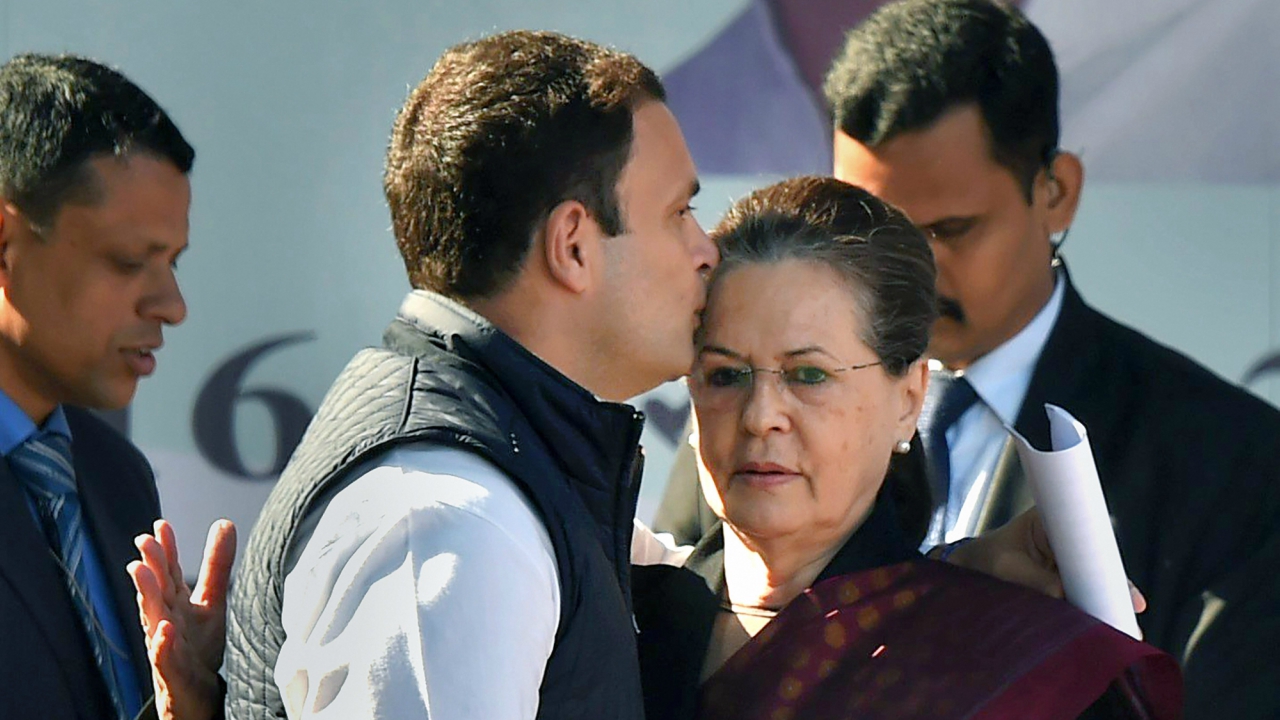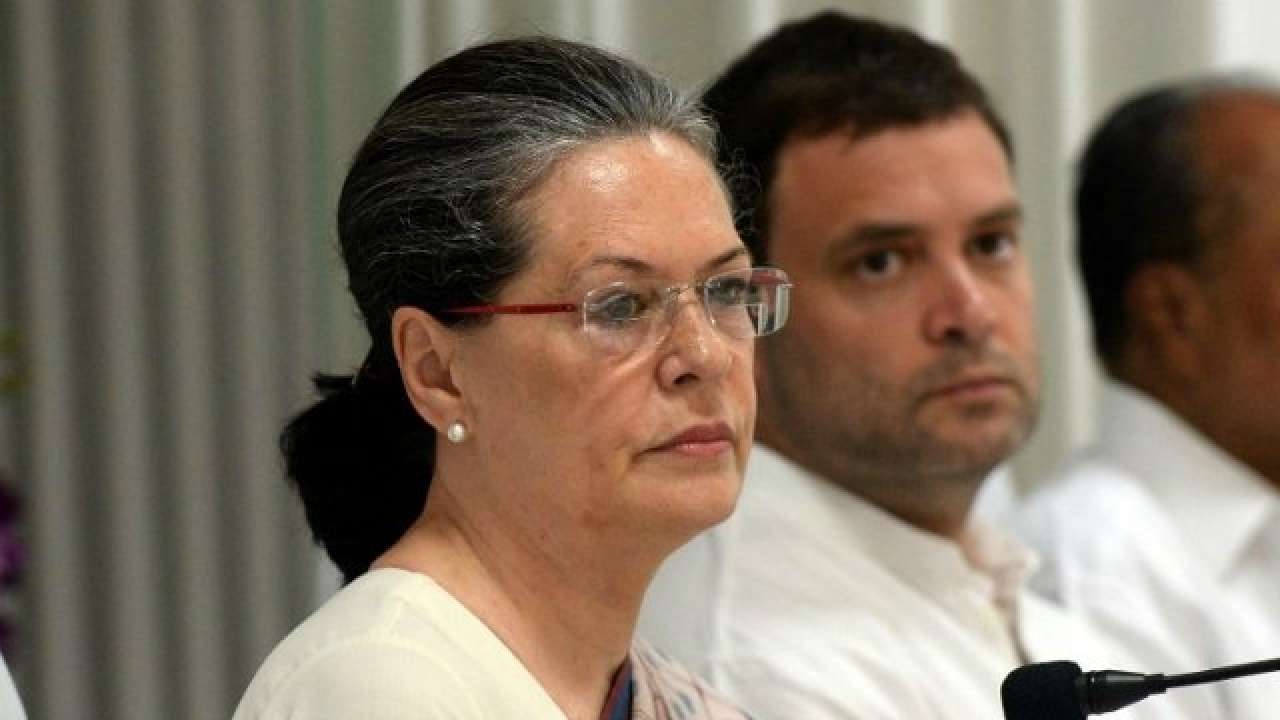Feature
Is Sonia Gandhi, and not Rahul, the answer to ego hassles in non-BJP camp?

An indication as to how difficult it is going to be for the opposition at the national level to get its act together was available after K Chandrashekar Rao met Mamata Banerjee in Kolkata to lay the foundation for a federal front.
However, even before the proposed alliance could get off the ground, the differences about its framework were visible. While the Telangana Chief Minister wanted it to be a non-Bharatiya Janata Party (BJP), non-Congress group, his West Bengal counterpart kept her options open about including the Congress.

A feature of these alliances is that each of their constituents is guided by the ground realities in their own states which may be at variance with the political condition in some other state. For instance, the Congress may be a more formidable adversary for Chandrashekhar Rao in his state, but it isn’t so for Mamata Banerjee. So, while the Telangana Chief Minister wants to keep the 133-year-old Grand Old Party at arm’s length, Mamata Banerjee, a former Congress person, is more accommodative.

Similar conflicting perceptions are known even within one party such as the Communist Party of India-Marxist (CPI-M) where the Kerala comrades are against any proximity to the Congress, obviously because the latter is a force to reckon with in the southern state, but the Marxists in West Bengal are keen on a tie-up with the Congress against the BJP since they no longer face any major threat from their old opponent in the state. Rahul Gandhi’s hope, therefore, of forming a “workable” anti-BJP alliance with other parties faces considerable roadblocks.

Yet, the BJP’s current vulnerability is obvious to its political enemies. At the same time, the non-BJP parties know that none of them is capable on its own of offering a serious challenge to the ruling party at the Centre. Banding them together is the only alternative. The egos of individual leaders are also a problem, for none of them will be willing to concede the role of a leader to another.
Difficulties of this nature have plagued earlier such formations. In the Janata Party (1977-80), the duel was between Morarji Desai, Charan Singh and Jagjivan Ram. In the Janata Dal (1989-91), it was between V.P. Singh, Devi Lal and Chandrashekhar.

It was to overcome similar confrontations in the confused post-1996 scene that the name of then West Bengal Chief Minister, Jyoti Basu, was proposed by United Front leaders like H D Deve Gowda, Mulayam Singh Yadav and others, but was rejected by the CPI-M. The BJP, on the other hand, has been fortunate in having an unchallenged leader like Atal Bihari Vajpayee in 1996 and in Narendra Modi now.
Who can be the unchallenged leader in the non-BJP camp at present? Although the leaders in a federal front are highly influential in their home provinces, none of them measures up to the popular image of a Prime Minister who is a sober, sophisticated, well-educated, widely respected, trustworthy and unbiased person with a clearly identifiable vision.
To start with Sharad Pawar, who is among those who have shown an interest in leading the charge against the BJP, there has been a question mark over his reliability ever since his party was seemingly regarded by the BJP as a prop against the Shiv Sena’s machinations in Maharashtra. He is generally seen as too clever by half and too much of a deal-maker to be trusted as the guiding light for the nation.

His age — Pawar is 78 — is also against him. India appears to be coming around to accepting Modi’s view, as articulated by senior BJP leader Yashwant Sinha, that a politician is “brain dead” after 75.
Rahul Gandhi at 48 is safe in this regard as is Mamata Banerjee (63), whose case is being energetically pushed by one of her lieutenants in Delhi. But while the Congress president is still considered not “grown-up” enough, the West Bengal Chief Minister is too immersed in her own province to be seen as a national leader.
Akhilesh Yadav (45) and Mayawati (62) have the same disadvantage of being rooted in the Hindi belt with its concomitant of casteism. Though also from the same region, 67-year-old Nitish Kumar was once considered a possible Prime Minister “material” before he shot himself in the foot with his politics of perambulation, forever looking for green pastures.

The bare cupboard of PM hopefuls leaves only 72-year-old Sonia Gandhi, who has been engaged in dinner diplomacy to cobble together an anti-BJP formation, as a possible candidate. But her minus points are obvious.
For one, she does not appear to be in the pink of health. For another, any whiff about her aspirations will make the Hindu Right revive the “foreigner” debate with great gusto with Sushma Swaraj perhaps once again threatening to shave her head as in 2004. For a third, she may not be interested as she is seemingly intent on paving the way for her son’s elevation.
Yet, the former Congress president is possibly the only one with a much wider acceptability in the non-BJP camp than anyone else and also among the Dalits, backward castes and minorities as well as a section of the traditional Congress supporters in the upper caste though not among the middle class. In a way, she offers the best of a bad bargain with the resultant turmoil proving to be one of the worst in recent years.
Entertainment
Meghalaya Reserves Legalized Gambling and Sports Betting for Tourists

The State Scores Extra High on Gaming-Friendly Industry Index
Meghalaya scored 92.85 out of 100 possible points in a Gaming Industry Index and proved to be India’s most gaming-friendly state following its recent profound legislation changes over the field allowing land-based and online gaming, including games of chance, under a licensing regime.
The index by the UK India Business Council (UKIBC) uses a scale of 0 to 100 to measure the level of legalisation on gambling and betting achieved by a state based on the scores over a set of seven different games – lottery, horse racing, betting on sports, poker, rummy, casino and fantasy sports
Starting from February last year, Meghalaya became the third state in India’s northeast to legalise gambling and betting after Sikkim and Nagaland. After consultations with the UKIBC, the state proceeded with the adoption of the Meghalaya Regulation of Gaming Act, 2021 and the nullification of the Meghalaya Prevention of Gambling Act, 1970. Subsequently in December, the Meghalaya Regulation of Gaming Rules, 2021 were notified and came into force.
All for the Tourists
The move to legalise and license various forms of offline and online betting and gambling in Meghalaya is aimed at boosting tourism and creating jobs, and altogether raising taxation revenues for the northeastern state. At the same time, the opportunities to bet and gamble legally will be reserved only for tourists and visitors.
“We came out with a Gaming Act and subsequently framed the Regulation of Gaming Rules, 2021. The government will accordingly issue licenses to operate games of skill and chance, both online and offline,” said James P. K. Sangma, Meghalaya State Law and Taxation Minister speaking in the capital city of Shillong. “But the legalized gambling and gaming will only be for tourists and not residents of Meghalaya,” he continued.
To be allowed to play, tourists and people visiting the state for work or business purposes will have to prove their non-resident status by presenting appropriate documents, in a process similar to a bank KYC (Know Your Customer) procedure.
Meghalaya Reaches Out to a Vast Market
With 140 millions of people in India estimated to bet regularly on sports, and a total of 370 million desi bettors around prominent sporting events, as per data from one of the latest reports by Esse N Videri, Meghalaya is set to reach out and take a piece of a vast market.
Estimates on the financial value of India’s sports betting market, combined across all types of offline channels and online sports and cricket predictions and betting platforms, speak about amounts between $130 and $150 billion (roughly between ₹9.7 and ₹11.5 lakh crore).
Andhra Pradesh, Telangana and Delhi are shown to deliver the highest number of bettors and Meghalaya can count on substantial tourists flow from their betting circles. The sports betting communities of Karnataka, Maharashtra, Uttar Pradesh and Haryana are also not to be underestimated.
Among the sports, cricket is most popular, registering 68 percent of the total bet count analyzed by Esse N Videri. Football takes second position with 11 percent of the bets, followed by betting on FIFA at 7 percent and on eCricket at 5 percent. The last position in the Top 5 of popular sports for betting in India is taken by tennis with 3 percent of the bet count.
Local Citizens will Still have Their Teer Betting
Meghalaya residents will still be permitted to participate in teer betting over arrow-shooting results. Teer is a traditional method of gambling, somewhat similar to a lottery draw, and held under the rules of the Meghalaya Regulation of the Game of Arrow Shooting and the Sale of Teer Tickets Act, 2018.
Teer includes bettors wagering on the number of arrows that reach the target which is placed about 50 meters away from a team of 20 archers positioned in a semicircle.
The archers shoot volleys of arrows at the target for ten minutes, and players place their bets choosing a number between 0 and 99 trying to guess the last two digits of the number of arrows that successfully pierce the target.
If, for example, the number of hits is 256, anyone who has bet on 56 wins an amount eight times bigger than their wager.











